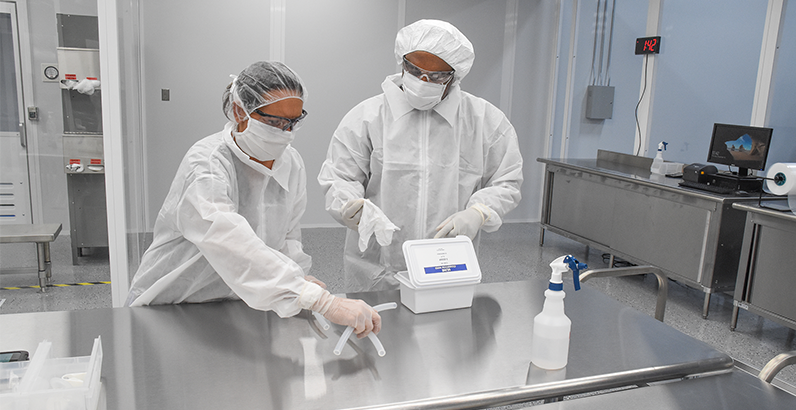A cleanroom is a controlled environment designed to minimize contamination from particles and other pollutants that could affect sensitive processes or products. These specialized environments are used in various industries, including semiconductor manufacturing, pharmaceuticals, biotechnology, aerospace, and more.
The primary purpose of a cleanroom is to maintain strict control over the level of airborne particles, such as dust, microbes, and chemical vapors. These particles are commonly referred to as "contaminants," and they can be harmful to certain manufacturing processes or sensitive products, leading to defects or reduced performance.
Key Features of a Cleanroom include:
1. Particle Control: Cleanrooms have highly efficient air filtration systems that continuously remove particles from the air. The number of allowable particles per cubic meter is specified according to a specific cleanliness class, usually determined by standards like ISO 14644-1.
2. Positive Pressure: Cleanrooms often maintain a slightly higher air pressure inside compared to the surrounding areas, ensuring that air flows from the cleanroom to less controlled spaces. This helps prevent outside contaminants from entering the cleanroom.
3. Gowning and Entry Protocols: Anyone entering a cleanroom must follow strict gowning procedures, such as wearing special clothing like cleanroom suits, gloves, masks, and shoe covers. These protocols present the introduction of contaminants from the outside environment.
4. Controlled Temperature and Humidity: Cleanrooms often maintain precise temperature and humidity levels to provide optimal conditions for the manufacturing processes and products.
5. Monitoring and Validation: Cleanrooms are regularly monitored for particle counts, temperature, humidity, and other parameters to ensure that they are operating within the specified limits. Periodic validation and certification are performed to verify the cleanroom's compliance with relevant standards.
The classification of cleanrooms is based on the number and size of particles allowed per cubic meter of air. For example, ISO 14644-1 defines classes ranging from ISO 1 (the cleanest) to ISO 9 (the least clean). The lower the class number, the stricter the requirements and control on particle contamination.
Cleanrooms are critical for industries that require stringent environmental control to ensure the quality and reliability of their products and processes. By minimizing contamination, they help maintain high standards of production and support the development of advanced technologies and sensitive products.
Find out more about Ace Sanitary's Class VI Cleanroom capabilities at: https://acesantiary.com/product-category-page/sanitary-single-use-tube
*content derived from ChatGPT


